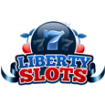Ask The Wizard #243
What are the odds of the Proline parlay bets offered by the Nova Scotia lottery?
For the benefit of other readers, the Nova Scotia sports lottery is like off the board parlays at a Nevada casino, with worse odds. For the random picker to get the expected return for a given pick, take the sum of the inverse of what each outcome pays. Then, take the inverse of that sum.
For example, on the Monday Night football game of November 9, 2009 they have the following choices:
Steelers win by 3.5 or more: pays 1.9 for 1
Broncos win by 3.5 or more: pays 3.25 for 1
Margin of victory 3 or less: 3.65 for 1
The sum of the inverses is (1/1.9)+(1/3.25)+(1/3.65) = 1.107981. The inverse of that number is 1/1.107981=0.902543. So, the expected return is 90.25. For a parlay, take the product of the return of all picks made.
I looked at several events, and the return per event ranged from 75.4% to 90.3% (from the above example). The average was 82.6%. Based on that average, here is the expected return according to the number of picks:
2: 68.2%
3: 56.3%
4: 46.5%
5: 38.4%
6: 31.7%
I was playing Let It Ride at Cache Creek Casino in northern California. A woman two seats from me hit a straight flush. The payoff for the bonus bet was $2000. When she left an hour later, my girlfriend sat next to me to play. Within 30 minutes, she also hit a straight flush. So, two straight flushes were dealt at the same table within 1.5 hours. Can you calculate the odds of such an occurrence?
Let's assume 60 hands per hour, and a total of four players at the table. So, in 90 minutes that would be 1.5×60×4=360 hands. The probability of a straight flush is 4×9/combin(52,5) = 36/2,598,960 = 0.000013852. The probability of exactly two straight flushes in 360 hands is combin(360,2)* 0.0000138522×(1-0.000013852)358 = 1 in 81,055. Stranger things have happened.
At the Borgata in Atlantic City, a $10.50 blackjack pays $16, since they don’t have quarters to pay you and always round up to the next 50 cents if you are owed a quarter. How does betting this amount affect the odds?
You’re getting paid 32 to 21 on a blackjack. That is an extra 1/42, or 2.38%. In a six-deck game, the probability of a winning blackjack is 4.53%. So, this is worth 2.38% × 4.53% = 0.11%, which isn’t bad. However, I think it is not a very elegant trick.
A local casino has a "special" blackjack table at which one can advance reserve the table for $20 for an hour of play. The table is a $5 minimum with standard blackjack rules except the house hits a soft 17. How lousy of a game is this, taking into account the nonrefundable reservation fee?
If we assume 70 hands per hour, a house edge of 0.64%, and a $5 bet, the cost of playing before the fee would be $5 × 70 × 0.0064 = $2.24. That $20 fee is pretty high in comparison. Considering you would bet $350 per hour, the total expected loss would be $22.24, for a house edge of $22.24/$350 = 6.35% (ouch!).
I often play a 6-handed game of Omaha hi/lo. It got me to wondering what the chance is that someone else at the table has both an ace and a deuce given that I also have both an ace and a deuce. If you could figure that probability, it would be much appreciated. Thanks for the great site; I have recommended it to my gambling buddies many times.
Let me remind my other readers that in Omaha each player gets four hole cards. I’m going to assume that you had one ace, one deuce, and two other cards of other ranks. Here are the ways and number of combinations another player can get at least one ace and deuce:
1 ace & 1 deuce: 3×3×combin(44,2)=8,514
2 aces & 1 deuce: combin(3,2)×3×44=396
1 ace & 2 deuces: 3×combin(3,2)×44=396
2 aces & 2 deuces: combin(3,2)×combin(3,2)=9
3 aces & 1 deuce: 3×3=9
1 deuce & 3 deuces: 3×3=9
total = 9,321
There combin(48,4)=194,580 total ways to choose 4 cards out of the 48 remaining. So the probability of an opponent getting an ace and deuce is 9,321/194,580 = 4.79%. We can estimate the probability that at least one player out of five opponents will have it as 1-(1-.0479)5=17.83%. This is not exactly right, because the probabilities are not independent among the players.




